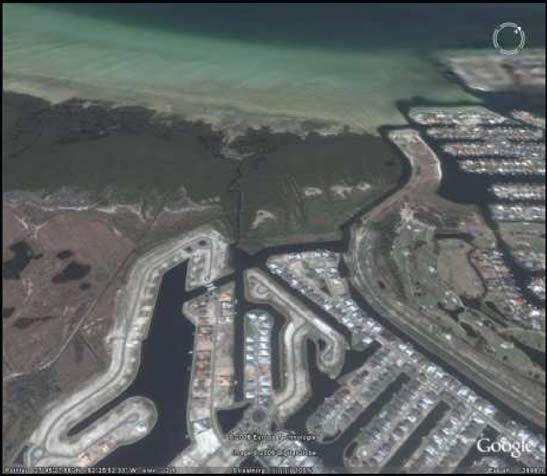It is important to note that no federal or state law dealing with wetlands confers any authority to protect lands inland from coastal wetlands that would become wetlands if the sea level rises, even if they are critical areas needed to replace the functions of lost wetlands. Current law only protects existing wetlands. There are important common law concepts, however, applicable to both state and federal jurisdiction, that cover the dynamic nature of the coast and the public interest in shores and tidelands, and that could provide a legal framework for protecting future wetlands. Two of the most important doctrines are the law of erosion and the public trust doctrine (Titus 1998).
The Law of Erosion
The law of erosion is sometimes called the law of accretion and reliction. This common law is a recognition going back to ancient times, and codified in the Justinian and Napoleonic codes, that the changing nature of shorelines, whether riverine or marine, causes property lines to shift also. If a property or sovereignty line is defined by a natural boundary, particularly those associated with water bodies, then the demarcation shifts with the natural boundary. Ownership migrates with the changing shores, just as state and federal boundaries do, unless otherwise codified. These common law principles have obvious implications for protecting inland areas for future wetlands.
The common law principles of accretion and reliction are recognized by all the Gulf states and by the federal government as well. As mentioned above, the states hold title to the beach up to the mean high water line. It is well-established that the boundary between private and public land shifts as the shoreline gradually changes due to natural forces. What is not clear is what happens when the sea has been held back or prevented from migrating inland through the construction of sea walls or bulkheads constructed on dry ground before the inundation occurred. While all the Gulf states hold title to submerged coastal lands, none of them have any provisions for prohibiting the construction of bulkheads just inland from coastal wetlands or other submerged lands on the bay side. Where bulkheaded coastal development has occurred, the failure to prohibit property owners from holding back the sea effectively nullifies the law of erosion. With coastal populations expected to double over the next 30 or so years along the Gulf Coast, we can expect to see many more developments.

Oblique aerial view of area in Tampa Bay, Florida, showing a classic example of a bulkheaded canal development that impedes landward migration of wetlands. This development appears to have been constructed on high, for-the-most-part non-wetland ground, perhaps impacting few existing regulated wetlands, but in effect destroying inundatable lands just inland of existing coastal wetlands. Bay waters are at the top of the photo, with fringing estuarine wetlands just below. Notice that the canal development, in the lower central part of the pnoto, is relatively recent, with construction still occurring on the left. Image captured from Google Earth.
Public Trust Doctrine
The public trust doctrine, jus publicum, is an ancient doctrine that declares that all “navigable waters” are held by the responsible government (federal or state) in trust for the benefit of the public. Navigable waters include areas subject to the ebb and flow of the tide, including tidal wetlands, regardless of the ability to float a boat. This doctrine has its roots in the need for public access to tidelands for hunting, fishing, and transportation, and is well established in both common and case law. More recently, the public trust has been recognized in the need to protect essential fish habitat, including coastal wetlands, as described above. The public trust doctrine does not distinguish between bay and ocean tidelands. A conflict is set up, however, because “owners assume land lasts forever, and the public assumes that beaches will always belong to the people.”
Take Home Message
In one sense, then, coastal lands subject to the ebb and flow of the tide are to be managed by the state for the public benefit. Together, the law of erosion and the public trust doctrine reserve for the public “a reversionary interest that vests when the land is below mean high water.” (Titus, 1998). Though current law does not future wetlands and their ability to migrate with sea level rise, the common law of erosion and the public trust doctrine could provide a framework for establishing a rolling easement protect these bordering lands.




